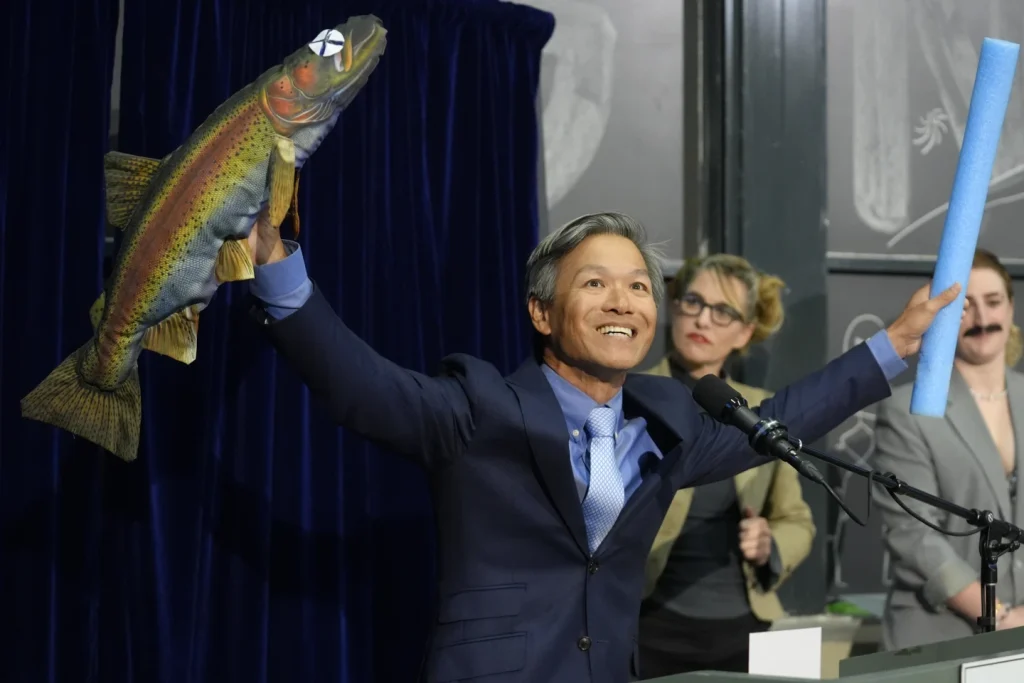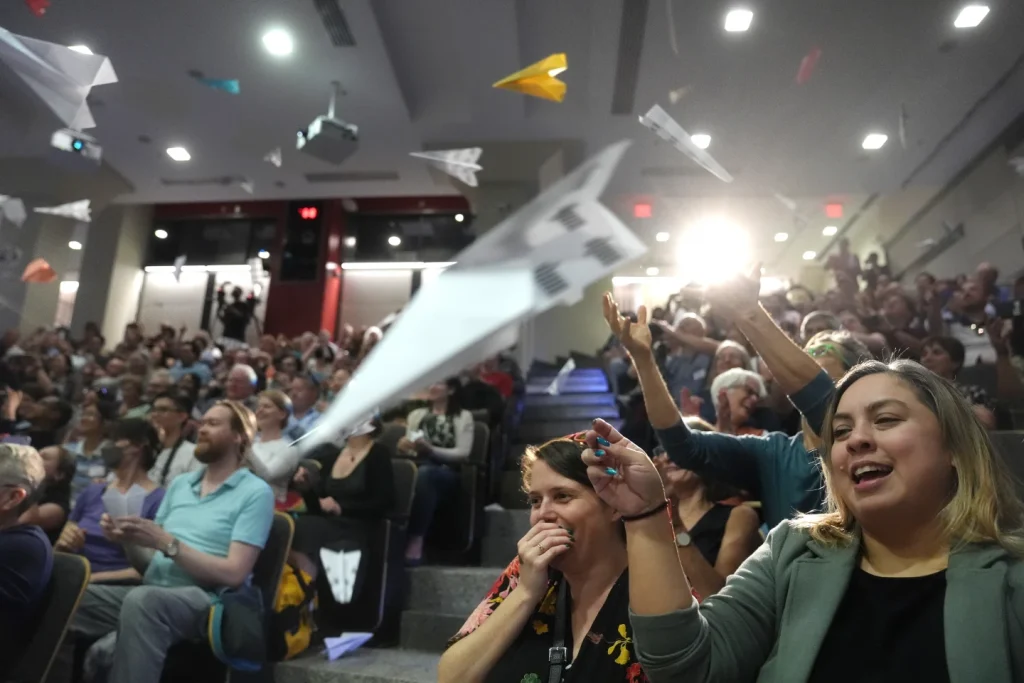The Ig Nobel Prizes, a whimsical counterpart to the prestigious Nobel Prizes, have become a cultural phenomenon over the past thirty-four years.
Celebrated in a grand ceremony at the Massachusetts Institute of Technology, these awards recognize “comical scientific achievements” that spark both laughter and thoughtful reflection among audiences worldwide.
The latest iteration of this unique event, held recently, showcased a parade of eccentric yet intriguing studies, including those involving pigeons guiding missiles and the swimming abilities of dead fish.
This essay seeks to explore the significance of the Ig Nobel Prizes, the peculiar nature of the studies awarded, and their impact on the public perception of science.
Founded by Marc Abrahams and the Annals of Improbable Research, the Ig Nobel Prizes aim to honor research that “first makes people laugh, and then makes them think.”
Abrahams himself articulates an essential spirit of the ceremony: amid the often-serious discourse of traditional scientific circles, it is vital to recognize the absurdity that can arise within the confines of academia.
The awards, held approximately a month before the Nobel Prizes, provide both levity and enlightenment, marrying humor with scholarly achievement.
Each winning study offers a unique lens through which to examine human curiosity, revealing how even the most seemingly ludicrous questions can lead to valuable insights.
The 34th annual ceremony honored ten winners across various categories, each accompanied by an element of hilarity that highlighted the bizarre nature of their respective research.
For instance, the study on utilizing pigeons to guide missiles reflects an eccentric brilliance that embodies the spirit of the Ig Nobel Prizes. Conducted by the late B.F. Skinner, a noted behaviorist, this research challenges our conventional understanding of animal behavior and its potential applications in modern technology.
By employing these birds in a military context, the study raises provocative questions about ethical considerations, human intervention in natural instincts, and the often-overlooked interplay between nature and technology.
Equally amusing is the inquiry into the swimming abilities of dead fish, conducted by James Liao, a biology professor at the University of Florida.
Liao’s findings reveal that even lifeless fish possess a semblance of movement, flapping their tails in response to water currents.
This phenomenon exemplifies the scientific principle that energy is conserved in several forms, regardless of an organism’s state of life.
Liao’s study not only entertains but also prompts viewers to reconsider the boundaries of life and movement, inviting deeper contemplation about the nature of existence.
The ceremony itself is a spectacle of humor, including farcical elements designed to engage and amuse the audience. Previous years have featured absurd performances, such as someone dressing as a target, inviting the audience to throw paper airplanes at them.

Such antics, combined with earnest scientific presentations, create an atmosphere where scholarly rigor is juxtaposed with delightful absurdity. This duality serves to demystify science, making it more approachable and enjoyable to the layperson.
The evening’s entertainment is underscored by the theme of Murphy’s Law, which posits that “anything that can go wrong will go wrong,” imbuing the ceremony with a meta-commentary on the unpredictable and often ludicrous nature of scientific exploration.
The significance of the Ig Nobel Prizes extends beyond mere entertainment; they play a crucial role in shaping public perceptions of science.
In an era where scientific literacy is increasingly vital, the playful nature of the Ig Nobels offers a refreshing alternative to the sometimes forbidding tone of mainstream scientific discourse.
By presenting research that is both absurd and profound, the awards inspire curiosity and engagement among audiences who may not otherwise interact with scientific concepts.
Moreover, the Ig Nobels challenge the notion of what constitutes meaningful inquiry. The studies recognized do not align with traditional metrics of academic success, such as grant funding or publication in high-impact journals.
Instead, they reward creativity, imagination, and the ability to provoke thought, regardless of the practical application. This can encourage scientists to explore unconventional ideas, embrace failure as a part of the scientific process, and understand that humor and laughter can coexist with rigorous inquiry.
The Ig Nobel Prizes stand as a testament to the idiosyncratic nature of scientific discovery. Charles Darwin famously remarked on the importance of curiosity in the pursuit of knowledge, a sentiment that resonates with the spirit of the Ig Nobels.

By celebrating absurdity and ingenuity, these awards not only entertain but also promote a more profound appreciation for the diversity of scientific inquiry.
In an age where the boundaries of science are continually being tested, the Ig Nobel Prizes remind us that laughter and curiosity are essential components of the scientific endeavor, ensuring that the pursuit of knowledge remains as much about joy as it is about rigor.
The recent announcement of the Ig Nobel prize winners is a delightful reminder of the intersection between humor and scientific inquiry.
The studies on pigeon-guided missiles and the swimming abilities of deceased fish exemplify the quirky nature of research that often goes unappreciated in more serious scientific circles.
It is intriguing to see how these unconventional studies can provoke thought and discussion about the principles of science, all while providing entertainment.
The acknowledgment of B.F. Skinner’s work through the peace prize, delivered by his daughter, indeed highlights the importance of recognizing historical contributions to science, even those that may seem eccentric at first glance.
The blend of comedy with thought-provoking research during the ceremony serves not only to celebrate these unusual achievements but also to remind us that science can be both enlightening and amusing.
Events like these encourage a broader appreciation for the diverse range of scientific exploration, inviting us to consider the underlying principles, irrespective of the seemingly absurd conclusions reached.
